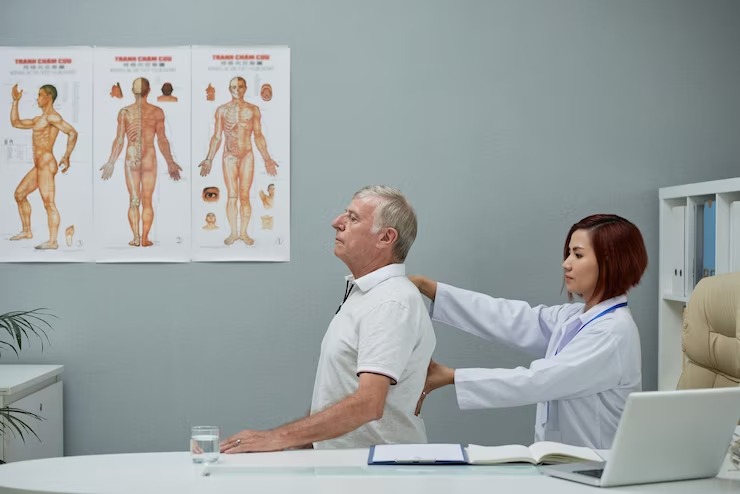The meniscus is a vital structure within the knee joint crucial in maintaining stability, cushioning the joint, and absorbing shock during movement. It is a C-shaped cartilage between the femur (thigh bone) and the tibia (shin bone). Each knee has two menisci, one on the inner (medial) and the other on the outer (lateral) side.
These crescent-shaped cartilages act as shock absorbers and provide stability to the knee by distributing the forces exerted on the joint. However, they are prone to injury, often resulting from sports activities, sudden twisting motions, or wear and tear over time.
The Impact of Meniscus Injuries
When the meniscus is torn or damaged, it can cause significant pain, swelling, and limited range of motion in the knee. A meniscus tear can lead to chronic pain, instability, and an increased risk of developing knee osteoarthritis if left untreated.
Unfortunately, the meniscus cannot heal independently due to its poor blood supply. This challenge has led researchers and medical professionals to develop innovative surgical techniques to rebuild the meniscus and restore the lives of those affected by these injuries.
Traditional Treatment Approaches
In the past, meniscus injuries were often treated with partial or complete meniscectomy, A Meniscus tear surgery procedure in which the damaged portion of the meniscus is either trimmed or removed entirely. While this approach provided short-term relief, it also resulted in losing the meniscus’s protective functions, potentially leading to long-term issues.
Recognizing the importance of preserving the meniscus, surgeons began exploring alternative treatments focused on meniscal repair or restoration.
H3: Meniscal Repair Techniques
Meniscal repair aims to reconnect the torn edges of the meniscus and promote healing. This approach is typically suitable for tears located in the outer rim of the meniscus, where the blood supply is relatively better. Depending on the tear’s characteristics, surgeons may use sutures, anchors, or other devices to secure the torn edges.
While meniscal repair can be successful, it has limitations. Rips in the inner piece of the meniscus, where blood supply is limited, often require a different approach.
Meniscal Transplantation
Meniscal transplantation may be viable for patients with extensive meniscus damage or previous meniscectomies. This procedure involves replacing the damaged meniscus with a donor meniscus from a cadaver. The transplanted meniscus is a functional substitute, providing stability and protecting the knee joint.
Meniscal transplantation has shown promising long-term results in pain relief, improved function, and reduced risk of osteoarthritis. However, it is a complex procedure that requires careful patient selection and extensive rehabilitation to achieve optimal outcomes.
The Rise of Tissue Engineering and Regenerative Medicine
Recent advancements in tissue engineering and regenerative medicine have opened up new meniscus repair and restoration possibilities. Scientists and medical researchers have been exploring innovative approaches to regenerate meniscal tissue. That provides a long-lasting solution for meniscus injuries.
Biodegradable Scaffolds and Cell-Based Therapies
One promising technique involves the use of biodegradable scaffolds combined with cell-based therapies. Biodegradable scaffolds serve as a framework to support the growth of new meniscal tissue. Stem or other specialized cells are then introduced into the scaffold, stimulating the development of functional meniscal tissue.
This approach holds great potential as it addresses the challenge of meniscus healing by providing a scaffold for cell growth and promoting tissue regeneration. However, further research is needed to optimize the techniques and ensure the long-term success of these procedures.
3D Printing and Customized Meniscus Implants
Another groundbreaking development in meniscus restoration is using 3D printing technology to create customized meniscus implants. By using advanced imaging techniques, surgeons can generate a precise 3D model of the patient’s knee and design an implant that perfectly matches the individual’s anatomy.
These patient-specific implants can be made from biocompatible materials and mimic the structure and function of a natural meniscus. 3D printing technology allows personalized treatment options and potentially better outcomes for patients with complex meniscus injuries.
The Future of Meniscus Restoration
As research in meniscus restoration continues to evolve, new techniques and treatments are on the horizon. Emerging therapies such as gene therapy, growth factors, and tissue engineering advancements hold promise for enhancing meniscal repair and regeneration.
The goal is to develop minimally invasive procedures that stimulate the body’s natural healing processes, promote meniscus tissue regrowth, and restore optimal knee function without extensive surgery.
Rehabilitation and Patient Education
Regardless of the chosen treatment approach, postoperative rehabilitation and patient education are vital in achieving successful outcomes. Rehabilitation programs typically involve a combination of physical therapy, exercises, and a gradual return to activities to restore strength, flexibility, and knee function.
Educating patients about adhering to their rehabilitation protocols and adopting healthy lifestyle habits is crucial for long-term success and preventing future knee injuries.
Conclusion
The advancements in surgical techniques and regenerative medicine have revolutionized meniscus repair and restoration. Patients now have more comprehensive treatment options, from traditional approaches like meniscal repair and transplantation to cutting-edge tissue engineering and 3D printing techniques.
These surgical marvels aim to rebuild the meniscus and restore lives by reducing pain. Improving knee function and prolonging joint health. As research continues to push the boundaries of medical innovation, the future holds even more promise for those affected by meniscus injuries, offering hope for a pain-free and active life.

